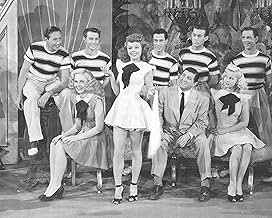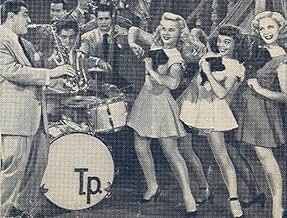Alex Romero(1913-2007)
- Additional Crew
- Actor
- Stunts
Noted choreographer and dancer, Alex Romero was born Alexander Bernard
Quiroga, son of Mexican general and wealthy politician, don Miguel
Quiroga. His father and thirteen of his twenty-three brothers were
killed during the siege of Monterrey, and his mother, three months
pregnant with Alex at the time, escaped to the United States with the
family's one daughter and gave birth to Alex in San Antonio, Texas.
Three of Alex's other brothers, who had survived the Revolution, found
their way to the United States and eventually formed a Spanish dance
act, adopting the stage name Romero because they were told Quiroga
would be too hard for American audiences to pronounce. When he was
eleven, Alex's only sister died of tuberculosis. Alex's brothers
concerned over the distraught state of their mother, had her and Alex
join them on the vaudeville circuit. Alex did not originally perform
with his brothers. He had no training in dance at all. "Pup," as he was
called, simply watched his brothers from the wings every night. One
day, one of his brothers, John, came into the theater and heard someone
tap dancing on the stage. He snuck up and found that it was Alex. Asked
where he had learned to tap dance, Alex replied that he had just made
up his own steps after listening to the rhythms of the various black
dancers he had seen in other vaudeville acts. Alex was asked to join
the Romero's dance act and to teach his other brothers to tap. He was
fifteen years old. The Romero brothers toured throughout the United
States and also for five years in Europe. During this time Alex's
future wife, Faun, traveled from the United States to be with him, and
they married in 1936 while the group was on tour in Norway. The
vaudeville act broke up 1939, when World War II started, and Alex
decided to leave Europe because Faun was pregnant with his first child,
Melinda. Upon returning to the United States, Alex auditioned for Jack
Cole and became part of his contract dance team at Columbia, performing
with Cole for two years. With the birth of Romero's second daughter
Judy, he left Cole's troupe. He began dancing in the movies and
performed in such films as The Thrill of Brazil, Time Out for Rhythm,
Texas Carnival, Tars and Spars, and An American in Paris. In On the
Town, he was featured as one of the three dancing sailors. Alex began
assisting some of the great film choreographers, such as Michael Kidd
on Seven Brides for Seven Brothers, Hermes Pan and Fred Astaire on
Barkleys of Broadway, Busby Berkley on Small Town Girl, and Gene Kelly
on American in Paris and On the Town. He also assisted on The
Bandwagon, Annie Get Your Gun, Kiss Me Kate, Les Girls, Showboat, The
Belle of New York, and Take Me Out to the Ballgame. His first solo
choreography came when he was assisting Robert Alton on Words and Music
(1948). Alton asked Alex to collaborate on a number with Gene Kelly
called "Slaughter on Tenth Avenue." In the same film, Alex was solo
choreographer for two numbers that have since become classics - "Thou
Swell," with June Allyson and the Blackburn Twins and "Lady is a Tramp"
with Lena Horne. Known for his clever, humorous, inventive style, and
brilliant use of props, Alex began working full-time as a
choreographer. He created dances for Janet Leigh in The Red Danube
(1949), Bob Fosse and Debbie Reynolds in The Affairs of Dobie Gillis
(1953), Russ Tamblyn in Fastest Gun Alive (1956), Tom Thumb (1958), and
The Wonderful World of the Brothers Grimm (1962), Doris Day in Love Me
or Leave Me (1955), and Susan Hayward in I'll Cry Tomorrow (1955).
Other credits include The Prodigal (1955), The Gazebo (1959), Whatever
Happened to Baby Jane? (1962), The Four Horsemen of the Apocalypse
(1962), The George Raft Story (1962), The Stripper (1963), Love at
First Bite (1979), Zorro, the Gay Blade (1981), among numerous others.
In 1957, he choreographed "Jailhouse Rock" for Elvis Presley,
conceiving the sets and costumes, and fighting with studio executives
to include the rock and roll number in the film. He became close
friends with Elvis and went on to choreograph three more films for him
- Clambake (1967), Double Trouble (1967), and Speedway (1968). His




































